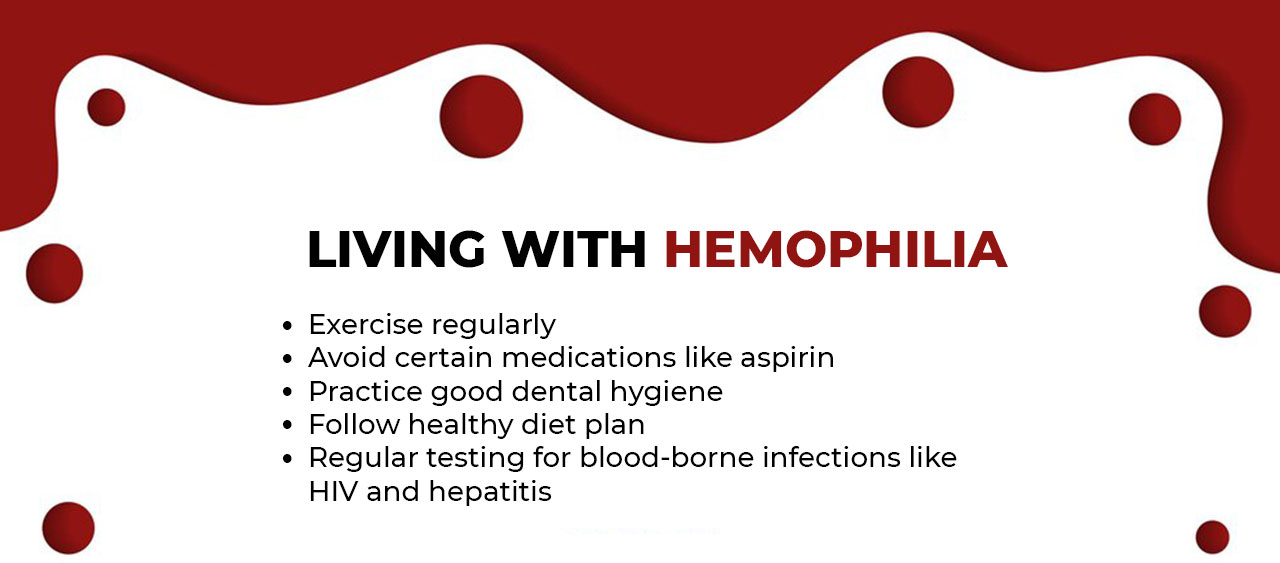Hemophilia is a rare congenital bleeding disease caused by an X chromosome-linked deficiency in coagulation factors 8 in hemophilia A or factors 9 in hemophilia B. This is a rare disorder and is characterized by spontaneous and potentially life-threatening bleeding episodes. It is a life disorder associated with physical, emotional, economic, and social problems for the ones who are affected. These problems not only remain limited to the patient, but they also extend to their families, acquaintances, and society in general. Though there have been significant improvements in the management of patients with hemophilia with the availability of safe and effective clotting-factor concentrates and advances in acute and prophylactic treatment, the combined effect of pain, potential disability, and reduced QoL have a substantial burden on the affected individuals and negative impact on the quality of their lives.
Social Aspects of the disorder
Patients with hemophilia are affected in their personal as well as professional lives. Especially the ones with inhibitors face more difficulties in managing their life than the ones without inhibitors. They face social issues related to employment, disability status, medical absenteeism, and insurance coverage. These issues can also negatively impact their self-esteem. Aspects like loss of independence, inability to achieve educational goals, and difficulty with employment suffered by many patients likely contributed to low self-esteem. It is observed that patients with hemophilia have shown lower self-esteem as compared to normal individuals.
Family relations
The patient and the family both face many challenges due to the ongoing financial and emotional struggles associated with hemophilia. The correlation between the family relationship and the severity of the disease is expected. Ten out of twenty people with severe hemophilia were found to think that they were a financial burden on their families. While four out of seven with moderate hemophilia have the same feeling. Whereas only nine out of forty-three were recorded in people with mild hemophilia having such a feeling. Similar ratios were seen with other aspects too like there were more disputes between the parents and children with severe deficiency in factors when it came to structuring the play activities. These children were banned from physical activities such as bicycling, mountain trekking, riding, etc. They were rather encouraged for intellectual and feasible competitions which led to conflicts.
Schooling
Out of most hemophiliacs who were attending or have attended the schools, only six out of sixty-four above six years of age received all their education or only a part of it at institutions or by other methods. Special facilities were provided by the local school boards whenever required. Though families gave special importance to education, parents of the hemophiliacs were scared to send their children to schools out of fear that they would get injured.
Employment
Thirty-four percent of the people with hemophilia had previously been refused to work, fired, or quit their jobs due to hemophilia. While fifty-five percent of people experienced difficulty in their current work because of this disorder. Though the majority of people would inform their employer about their condition, some of them hid it due to the fear of dismissal. But in mild cases, fewer patients were seen to have missed less than two weeks of work. The job profiles where more than three weeks of work were missed were basically not suitable for people with mild hemophilia. Those included meat cutters, truck drivers, plumbers, and cement workers.
Economic burden of Hemophilia
Although hemophilia affects only a small portion of the population, the costs associated with treatment are quite high. It is a chronic condition that requires life-long treatment, hence it imposes a high financial burden on the affected individuals. The individual costs vary with the disease severity, complications, and treatment regimen. The majority of the costs are direct costs related to anti-hemophilic medication, clinical visits, hospitalizations, medical and surgical procedures, and laboratory tests. The indirect costs are associated with patient or carer productivity losses, or increased absenteeism caused by hemophilia and its treatment, resulting in disability and death. It is also important to consider intangible costs like the impact of the disease on the quality of life, pain, and suffering resulting from the disease as well as the emotional and psychological effects of the disorder.
Direct Costs
There are several variables such as different types of hemophilia, disease severity, frequency of bleeding episodes, presence of inhibitors, type and frequency, and payer source that make the task of estimating the cost of care for hemophilia quite challenging. According to published estimates, the average healthcare costs for patients with hemophilia reach up to $140,000 per year in the absence of inhibitors. Treatment-related costs are often the focus of attention due to their significant burden with anti-hemophilic medication accounting for more than 80% of the annual cost of the treatment. Money required for factor replacement therapy either as prophylaxis or as acute or on-demand therapy makes up more than a fourth of the total direct expenditures for patients with hemophilia A and B.
Indirect costs
Indirect costs basically refer to the output lost because of a reduction of productivity, resulting from the complications such as recurrent bleeding, or disability caused by the disease. Indirect costs include loss of wages from missed work of patients or their caretakers who were employed. A study found that 80% of hemophiliacs reported either very large, moderate, or small negative impacts of the diseases on their employment. Wages are used as the proxy measure of the output of work time, so a loss of work time leads to a loss of earnings for the patient.
Living with hemophilia

Life with hemophilia is not easy. There is no cure for hemophilia but in certain ways, the risk of excessive bleeding can be reduced. These ways include regular exercise, and avoiding certain medications like aspirin, nonsteroidal anti-inflammatory drugs, and heparin which are blood thinners. Additionally, practicing good dental hygiene. A patient receives spontaneous injections of an engineered version of clotting factor VIII for hemophilia A or IX for hemophilia B. The CDC (Centers for Disease Control and Prevention) suggests regular testing for blood-borne infections like HIV and hepatitis and getting vaccinated against hepatitis A and B. Hemophiliacs receiving donated blood products may be at the risk of developing these diseases. There are Hemophilia Treatment Centers available for support. According to a study it was found that the patients who used HTC ( Hemophilia Test Center) were 40% less likely to die of a complication associated with their condition.

